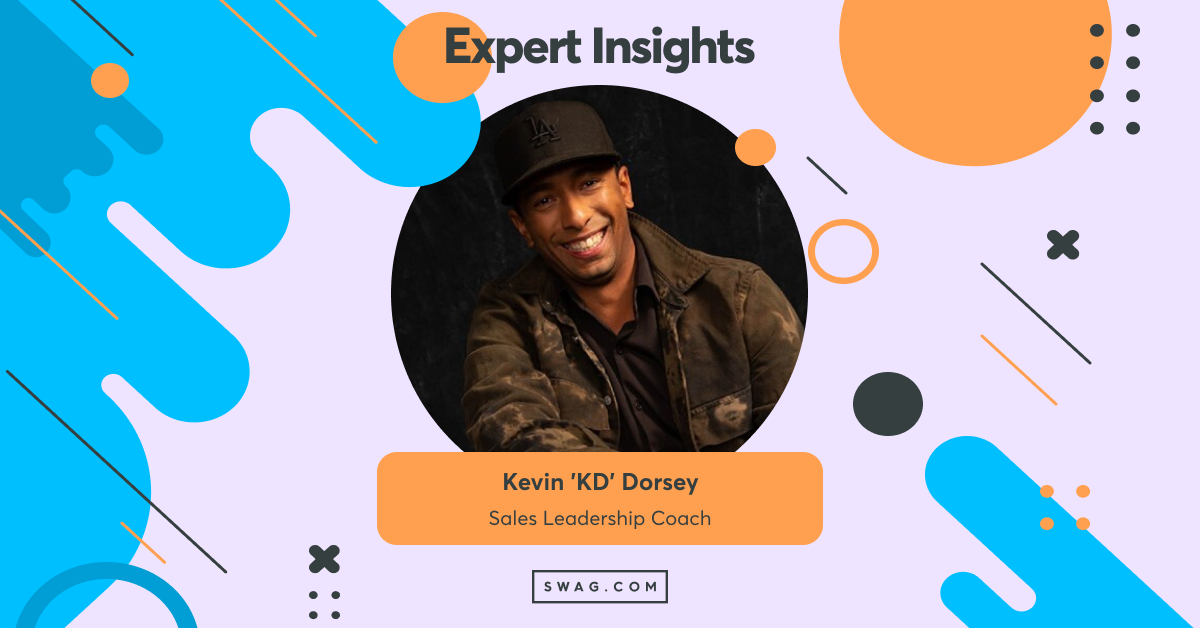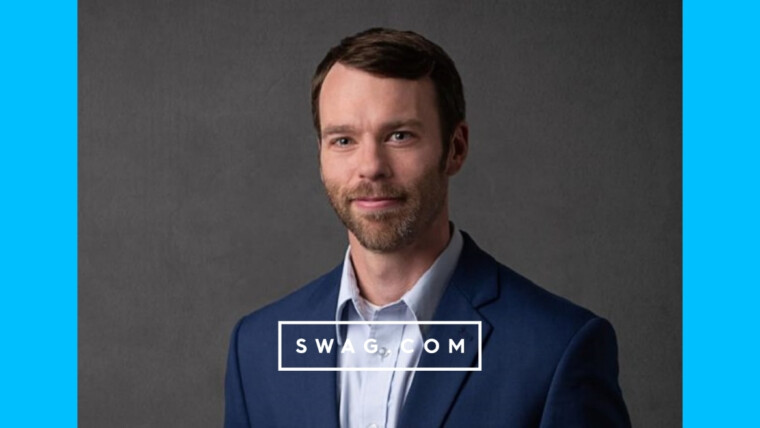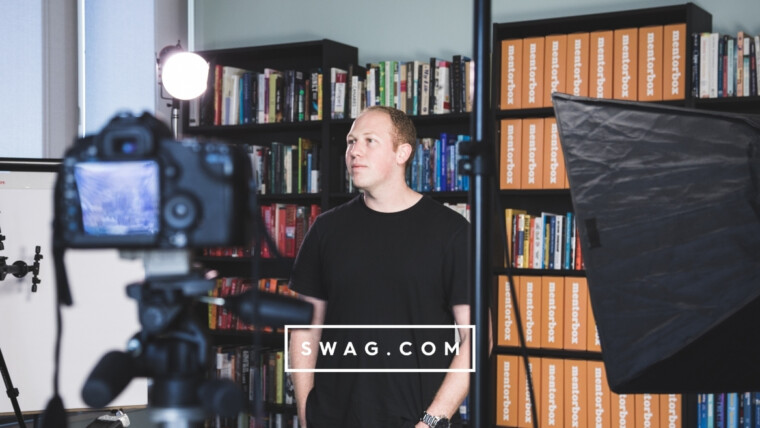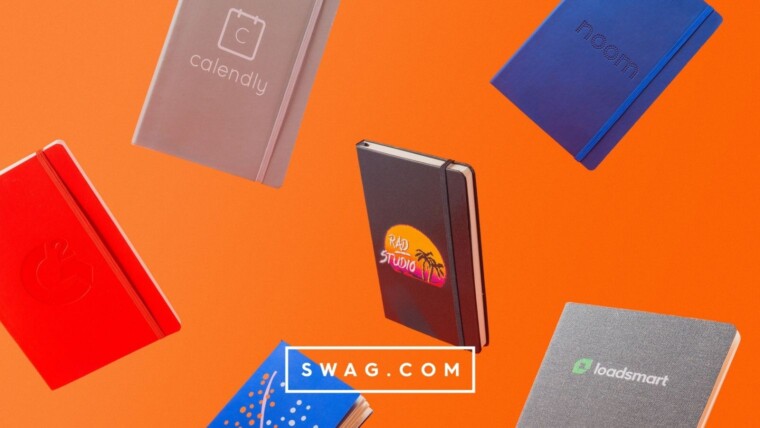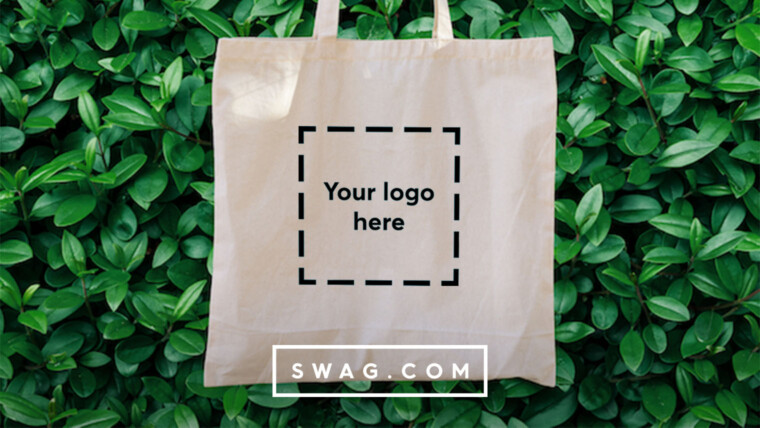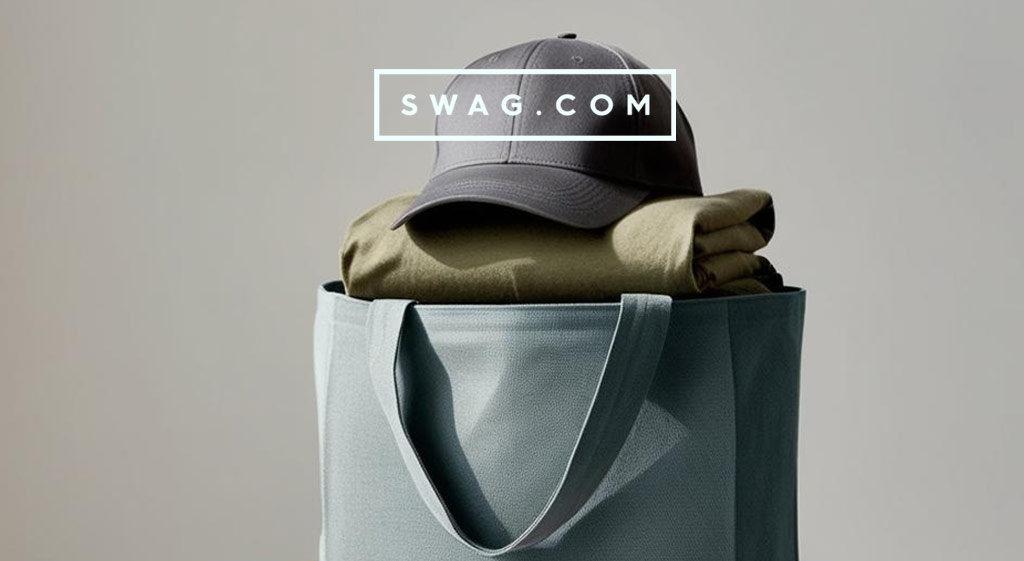Here at Swag.com, we get the chance to cross paths with tons of experts from the business world.
From thought leaders in HR, sales and company culture, to cutting edge creatives working in events, advertising and branding, we work with all sorts of talented individuals pushing the boundaries of how business gets done.
Our Expert Insights series aims to bring our audience tips, tricks and wisdom from top professionals across the globe.
Zoë Hartsfield is an expert in community building, and a Demand Generation Manager at Spekit. With over 30,000 followers on LinkedIn, Zoë speaks to a wide audience of business pros about sales enablement, mental health and business and more.
We spoke to Zoë about what community building means in the business world, how to begin growing an organic community from nothing, and why brands who focus on being seen instead of thought of are bound to fail at marketing.
Swag.com: The first thing we want to ask is a very basic question, but something that is still really important to define. Everyone has a conception of what community means to them. But in a business sense, what does community mean to you?
Zoë Hartsfield: Community is a well that we can draw from when we’re empty, and a vessel to pour into when we are overflowing. In a business capacity, that works when we can come together and have a united foundation; maybe we share a problem, maybe we share a goal, maybe we share passions. There’s something that unifies us, and community gives us a sense of belonging.
But it’s also something for us to tap into, and be reciprocal with that energy. You could break it down into a bunch of different things in a business context. Maybe it’s a community of salespeople. Maybe it’s a customer community, where customers are educating one another on best practices. Maybe it’s a group of people who are all trying to do the same thing. Maybe it’s a group of people who all have the same job. And they come together on a platform to swap best practices and tips.
It’s really just about that. Do we have the same question, problem or goal? And can we come together and help one another in that way? And I think that’s the core of what community is in a business sense.
So what is the value of community in a business sense? What makes it important for businesses?
I think it depends on what the community charter and the goal of that specific community is. If you have a customer community, maybe the value is faster adoption, better retention, fewer support tickets, customer to customer education, more face time with your customers to strengthen those relationships.
It really just depends on how you set it up. The value of community depends on the goal of the community. But I also think it’s sort of endless, because you can create a community that starts with one goal, and then make other programs that have other values.
The best strategy I’ve ever seen for communities is to start with one value or goal. And when you crush it, add on another program and see what value you can get out of that. Here at Spekit, we’re building our customer community. I envision in two years, it will also be a persona based community. And maybe we’ll have a job board, and it’ll serve all of those functions in one place.
Again, I think it really just goes back to, “what is the goal of community? Who do we serve?” And you have to start there. That’s where the value is.
So once you have the value of your community defined, how do you start making it attractive to people? How do you start building it? How do you create demand for it?
Oh, you could do it a bunch of different ways. Again, I think it depends on the goal of the community.
I’ve seen people build communities and then publicize it on social media. I’ve seen more exclusive niche communities where it’s invite only, and the exclusivity kind of creates that draw. I think it depends on the goals, but it’s all about, “what’s in it for me?” It’s human psychology 101. What are you giving to the person? What are they going to get out of this community?
I was able to get a group of about 15 enablement experts to join our marketing advisory council with a budget of $7 and paper clip. I’m not paying them to be a part of it. I had to sell the idea, sell the vision, and paint a picture for them of what is in it for you, VP of enablement at ABC company. Why should you give me you know, three hours of your quarter, every quarter, and like, a few minutes on Slack every week, like how to do that.
I think it’s really about the story that you tell, the mission you’re aligned to, and then really, really selling the “what’s in it for them.” That could be different from community to community, but just figure out what that is, and that’s what you lead from.
What are some things that you might recommend to someone that’s trying to make something from nothing? What are ways that they can get people excited, engaged, and ultimately want to be a part of a specific community?
I think you ask the people that you’re building for what they want. Then they feel they are a part of the build process— they feel a sense of ownership. I’ve seen a lot of communities go the founding member route, which is really interesting, because then people feel like, “I helped build this thing, so I’m now invested and I want to invite my network.” Then, you’re leaning into user generated content, and it kind of expands from there.
The most important thing when you’re starting from scratch is to ask the people that you’re building the community for what they want to see. I’m not an enablement professional; I’m just building a community for enablement professionals and rev ops professionals— that’s not me. So I shouldn’t build a community off of my best ideas, I should ask the people that I’m building the community for what they want to see. That not only gets buy-in from them and gets them excited, but also informs where I should go.
If you’re on the ground floor, ask your persona, what they want, and you’ll get that emotional investment from them. Plus, you’ll also build something that people like them are excited about and attracted to.
Yes, that’s very smart. When people are trying to start something, it can feel right to just draw from your own experience or your gut. But your audience ultimately knows more than you do about what they want, which is kind of a weird thing to let go of as a leader or founder or even product developer.
If you’re building a product, there’s a ton of value in user feedback and testing; you want to keep that feedback loop really tight. I could have a great idea, and it could be right. But if I’m wrong, and I spend time building that thing that nobody cares about, what a waste!
You’ve got limited time and resources, and you want to make sure you’re investing in the right spot. It’s better to take that extra couple of days and survey your audience, or existing community, or people in your network who might be able to inform you better, and then go in that direction. Because if you are two degrees off now, the further you get down the road, the delta gets enormous the more you build. Make sure you’re aligned from the get go.
What role does gift giving and swag play in community building? What have you seen work well in that space?
I think gifting is an important part of any community strategy, and swag in particular. Especially if you’re branding a community independent of the company you work for, or if you want sort of a sister or cousin brand that is specific to the community.
I think of swag as sort of like a uniform. When I go to a Giants baseball game, I’m wearing a Giants cap. Now, I’m not on the team, but I’m a part of a group of people who are rallying around the same mission: we want to see our team win. I think it’s kind of a similar idea when it comes to community. If you can create a miniature brand, or an offshoot of your existing brand that is the community, you can generate experiences with swag, and there is value in creating an experience that makes somebody feel a part of something. That’s where I think swag can function, almost like a uniform or like a piece of team colors.

The way that we connect has changed a lot over the last few years. COVID-19 and remote work has had a huge impact on events and in-person team building. How do you think it’s affected community building in business spaces?
I think it’s honestly propelled community building. Now that people aren’t as frequently in the office, they aren’t getting that sense of community in the same way they were before. Or, if they are in person, it’s been a couple of years and people are like, “I don’t know how to be a person in a social interaction anymore.” It’s really created this need, or at least revealed a need that already existed in the business world, for communities where people come together and feel a sense of belonging and purpose and camaraderie. As much as COVID sucked, it did a lot for community spaces.
A lot of companies are now adopting a community led growth strategy. Virtual communities, in a remote-first world are essential. I’d be cool to meet up with people in my same city, but I travel a lot now, so I might miss that meetup. But, if there’s a weekly happy hour that I can hop on virtually, I’m excited about that because I get to familiarize myself with people and build meaningful relationships. There’s consistency, but also flexibility in a remote first kind of experience. I think what we’re gonna see is sort of a shift back from digital to in person, and also a hybrid mix where people have consistent virtual meetups, but also the occasional user group get together.
That’s really interesting. A lot of people have talked about the shift away from in person as a kind of armageddon, because it completely changed everything.
Change isn’t armageddon! Change is a time to adapt and evolve— it’s just a new challenge to face. Even right now you’re seeing people craving that in-person experience, but they need the flexibility. Having the option of that hybrid model isn’t going anywhere, because of the remote-first wave we’ve seen. I think it just creates more opportunities to do something interesting and stand out.
Everybody’s frustrated about it, which I get. But I also see it as an opportunity; everyone is going to be doing this one thing to solve the problem, but how can we do it just a little bit different so that it stands out and makes a lasting impression? That’s like the way to do anything. Zig when they zag.
“Change isn’t armageddon! Change is a time to adapt and evolve— it’s just a new challenge to face.”
Tell us about either the best, or worst piece of swag you’ve ever received.
If I never get another t-shirt with just a huge logo across the chest of it again, I would die happy. Those come to me, and I immediately donate them to Goodwill. Not because I don’t love the company, but I’m never in the history of the world going to wear that shirt out in public. So that’s probably the worst swag. Please stop sending me branded t-shirts. Anyone listening to this— I love you, but I can’t take it anymore!
Best piece of swag… well, I like thinking about your swag as if you were a clothing brand. Forget that you have a software product. If you were a brand, how would you go to market with this piece of swag? Could it stand alone as a product? Would somebody buy this by itself? If the answer is no, it’s probably not worth making. Sorry. That’s my hot take on that.
For example, I have a sweatshirt that’s a modern, oversized, slouchy cream colored crewneck sweatshirt. The embroidery is the same color as the sweatshirt, and the company logo is on the very back, underneath the tag really small. It’s just a cool sweatshirt! People compliment me on that sweatshirt all the time and ask, “where’d you get that?”
Our best swag that we give away is a little octopus plush doll that’s our company mascot. People love that thing. What we’re talking about doing is on that little tag, just throwing a QR code to the website. So that way, it’s an affordable company website plug. It’s got almost nothing to do with what we do—it’s just like a really cute little animal thing that people like. Think less of you and your brand, and more of what your customers want and will find delightful. When people inevitably ask them about it, then they think of you. It’s not that they see you, it’s that it makes them think of you that’s more important.
Are you an industry leader that would like to be featured on our blog? Please feel free to reach out to blog@swag.com to get in touch.






